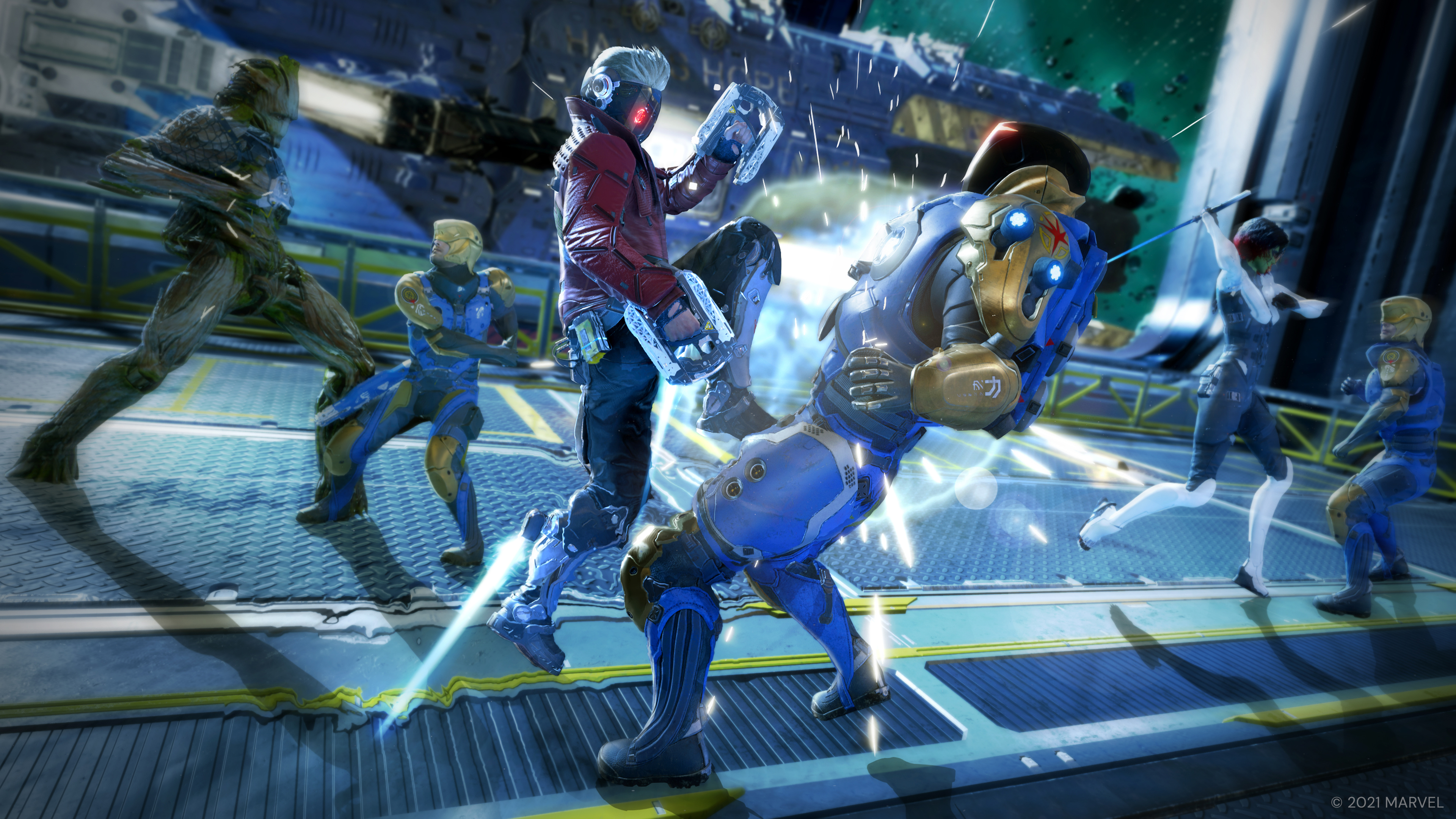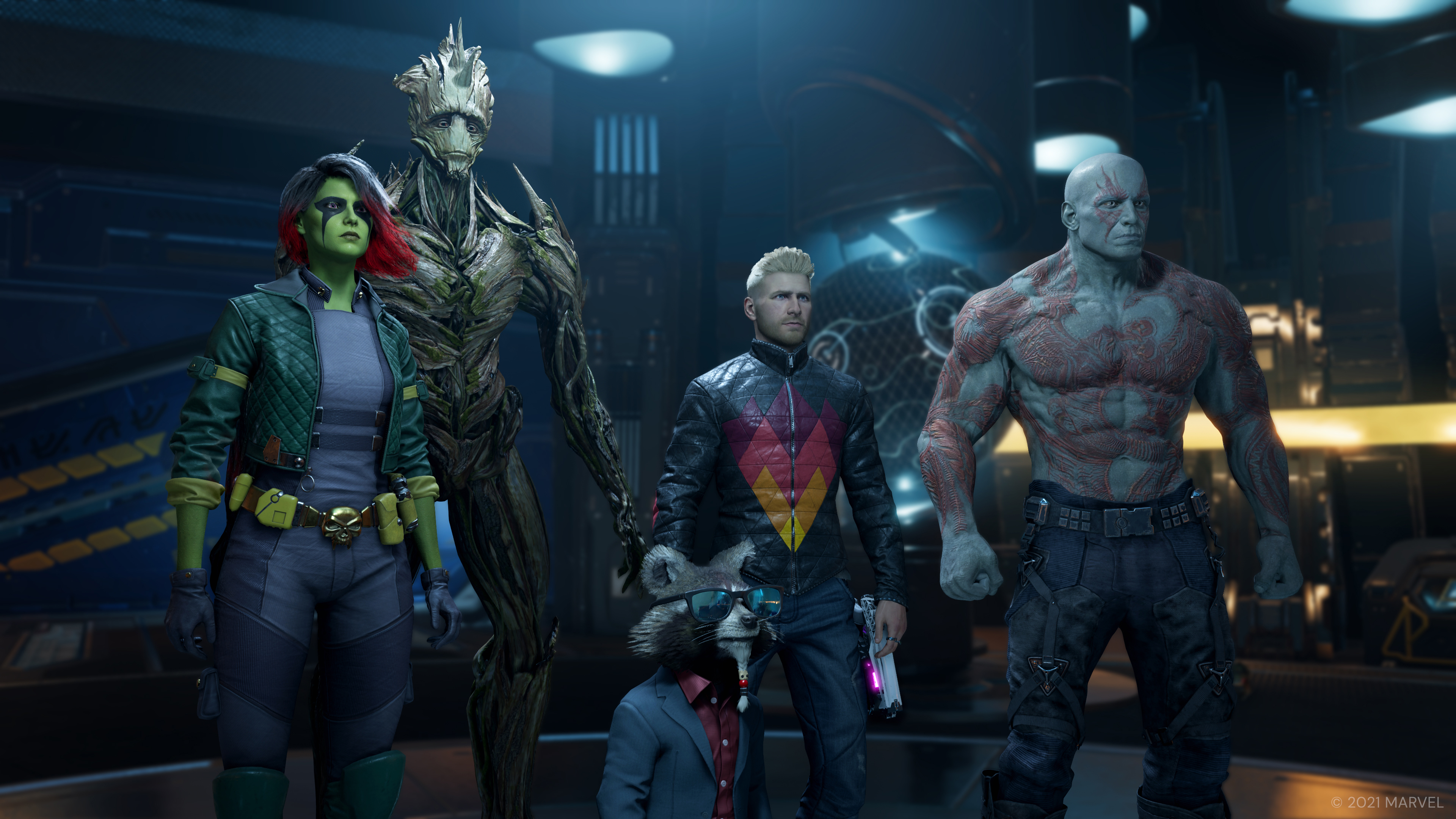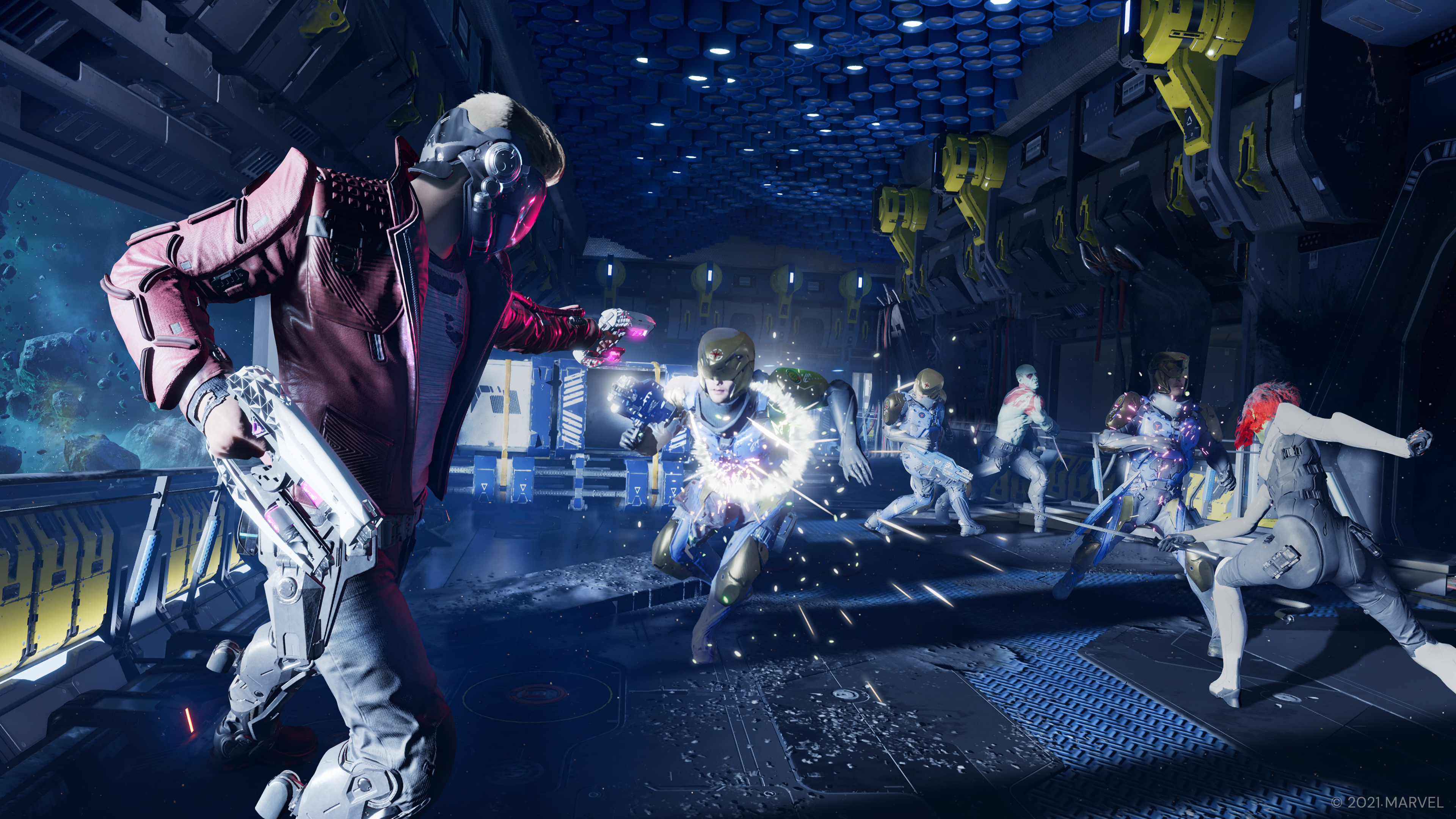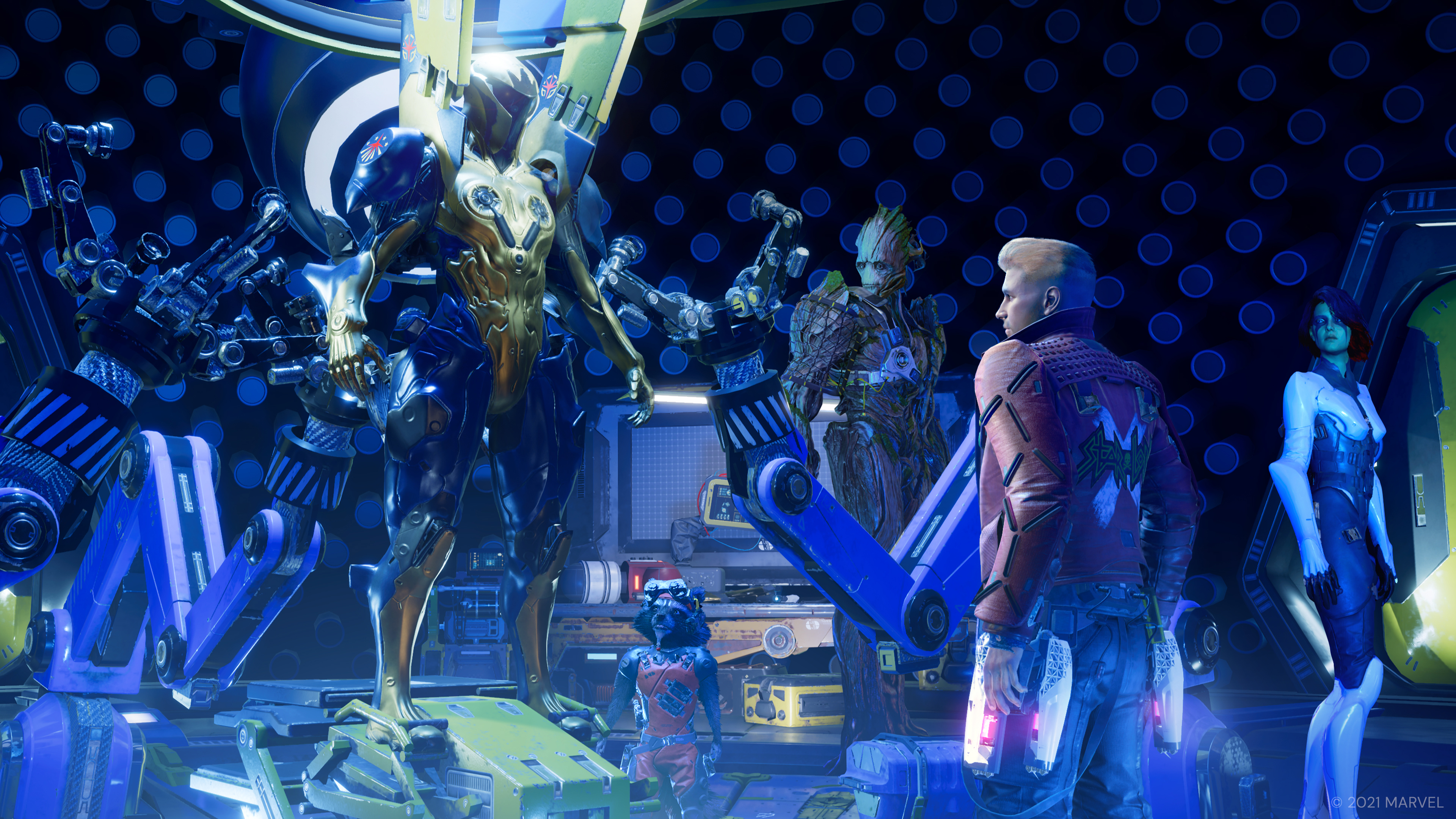Marvel’s Guardians of the Galaxy hands-on: Kicking it old school
Marvel’s Guardians of the Galaxy plays well, but also plays it safe

Toward the end of my Marvel’s Guardians of the Galaxy demo, the whole experience nearly came together. Playing as galactic adventurer Star-Lord, I had the Guardians of the Galaxy at my back, and a legion of mind-controlled Nova Corps soldiers in front of me. The odds looked bad, but with the tap of a button, I summoned my team to my side and gave them a pep talk. Knocked-out party members leapt to their feet; Twisted Sister started playing in the background; everyone vowed to kick some butt.
Then, I got swarmed by a bunch of generic enemies while the rest of the team was off doing its own thing, and had to restart the section. It took me three tries to get it right, by which point the whole thing felt exhausting rather than exhilarating.
- Play the best Xbox Series X games
- Also try the best PS5 games
- Plus: PS5 update reportedly brings surprise performance boost to some games
I recently went hands-on with Marvel’s Guardians of the Galaxy at a Square Enix press event, where I played through a 90-minute level, start to finish. The tension between style and substance is at the heart of Marvel’s Guardians of the Galaxy. It’s obscenely stylish, with colorful graphics, immersive level design and a killer soundtrack. It’s also a fairly standard third-person action game, with repetitive combat against enemies that soak up way more damage than you’d expect.
Space cases

Marvel’s Guardians of the Galaxy bears more than a passing resemblance to Marvel’s Avengers. They’re both published by Square Enix; they’re both third-person action games starring Marvel superheroes; they’re both focused on team combat against huge waves of enemies. Unlike Avengers, Guardians of the Galaxy is a completely single-player game. That means Guardians of the Galaxy can embrace a slower pace and more focused level design than Avengers, and this is where the game shines.
My demo took place about four hours into the game, where displaced Earthling Star-Lord leads his team to the Nova Corps headquarters to pay a fine. (It’s more exciting than it sounds.) Before disembarking, I had a chance to talk with Rocket Raccoon, Gamora, Drax the Destroyer and Groot. While you don’t play as any of the other Guardians directly, the game gives you lots of chances to interact with them, as well as with your ship, the Milano.
Before the mission began, I also had two chances to upgrade my skills. As you fight enemies, you gain experience, which lets you buy new active combat skills. You can also collect various components scattered around each level. These let you buy passive perks. The upgrade systems are functional, but not all that creative.
One thing I admire about Guardians of the Galaxy is that, at least judging by this mission, it doesn’t fall back on combat too much. A significant chunk of the demo was about puzzle-solving, exploration and dialogue.
Get instant access to breaking news, the hottest reviews, great deals and helpful tips.
The Nova Corps headquarters turns out to be deserted, which gives the Guardians a good excuse to investigate their surroundings. The darkened, silent halls of the headquarters felt suitably eerie, and also gave Star-Lord an opportunity to solve some simple puzzles.
Every member of the Guardians has a different special skill, and Star-Lord can direct his team with simple contextual button presses. For example: I had to draw my gun, blast a hatch open, and send the diminutive Rocket Raccoon scrambling through it so that he could unlock a door. It’s not exactly The Legend of Zelda, but these interludes helped pace the level exploration, and give the Guardians an excuse to banter amongst themselves.
Playing it safe

Of course, the Nova Corps Headquarters didn’t stay deserted for long. A mysterious villain had enthralled the upstanding Nova Corpsmen, forcing them to do battle with the Guardians. Star-Lord had a few different dialogue options when confronting the villain, as well as a choice to attack some of the enemies head-on, or hang back and wait for a better opportunity. These small choices are a nice touch, although it’s not clear whether they’ll have lasting effects on the gameplay or story.
Combat is one of the cornerstones of Marvel’s Guardians of the Galaxy, but it can get tedious quickly. As Star-Lord, you have quite a few options at your disposal, but each one seems to have a significant drawback. You can fire away with your dual pistols, but the farther away you go, the less damage you do. You can stave off enemies with impromptu melee attacks, but these don’t pack much power. You can stay on the ground, but enemies can swarm you easily. You can use your jet-boots to fight from the air, but enemies can knock you to the ground and incapacitate you. Since the Nova Corpsmen had a ton of health and Star-Lord’s basic attacks didn’t do much damage, each battle felt like a protracted war of attrition.
Where Guardians of the Galaxy sets itself apart from other third-person action games, though, is that you have four other characters at your back. During combat, Rocket, Gamora, Drax and Groot handle themselves competently, dishing out damage against nearby foes and generally staying alive while doing so. You can command them to perform special attacks, or you can call a Team Huddle. This is one of Guardians of the Galaxy’s unique features, where combat stops for a moment and you have to figure out the right words to motivate your team. Do it correctly and you’ll get an attack bonus; mess it up, and there’s no real penalty. You do get some cool ‘80s music in the background either way.
The game’s combat variety is beyond reproach. The trouble is that no matter what you do, combat will almost always boil down to spamming as many regular and special attacks as you can while desperately trying to get away from the maelstrom of enemy attacks. Star-Lord can’t take many hits, but in a heated battle, it can be difficult to tell where the next attack will come from, or which foe represents the most pressing threat. Combat encounters take a long time and don’t have many checkpoints, so one false move could jettison a whole lot of progress.
After blasting my way through a contingent of standard Nova Corpsmen, I then had to take on bigger, tougher ones with shields. These required me to deploy the other Guardians’ special skills — and also took much, much longer to defeat. Combat is chaotic and packs a ton of variety, but once the repetition sets in, it’s mostly just another obstacle between you and the next story point.
Marvel’s Guardians of the Galaxy outlook

Marvel’s Guardians of the Galaxy features an original story, untold by any existing comic book, movie, or animated TV series. Even so, the game feels familiar — sometimes comfortably so, and sometimes to its detriment. The game will probably avoid many of Avengers’ missteps; the question is whether it can replace them with something better.
Marvel’s Guardians of the Galaxy will launch on October 26 for all platforms, and will cost $60.

Marshall Honorof was a senior editor for Tom's Guide, overseeing the site's coverage of gaming hardware and software. He comes from a science writing background, having studied paleomammalogy, biological anthropology, and the history of science and technology. After hours, you can find him practicing taekwondo or doing deep dives on classic sci-fi.
